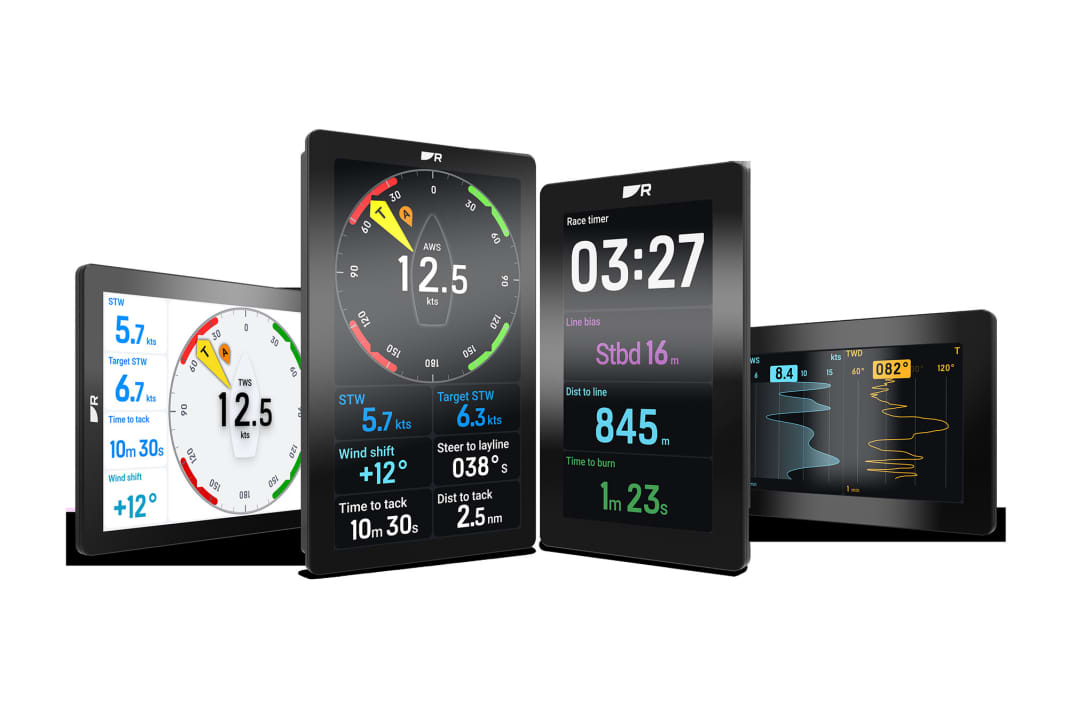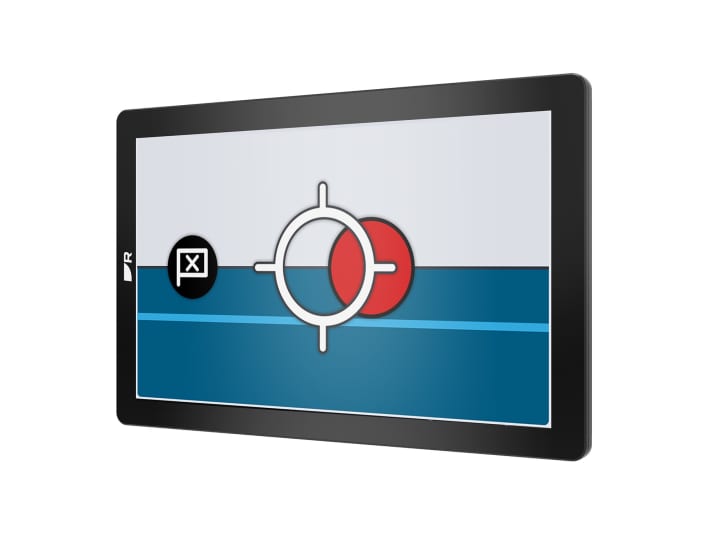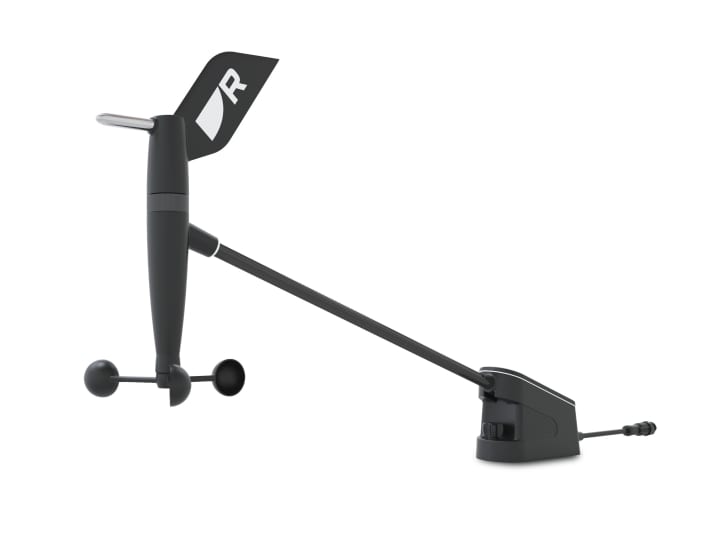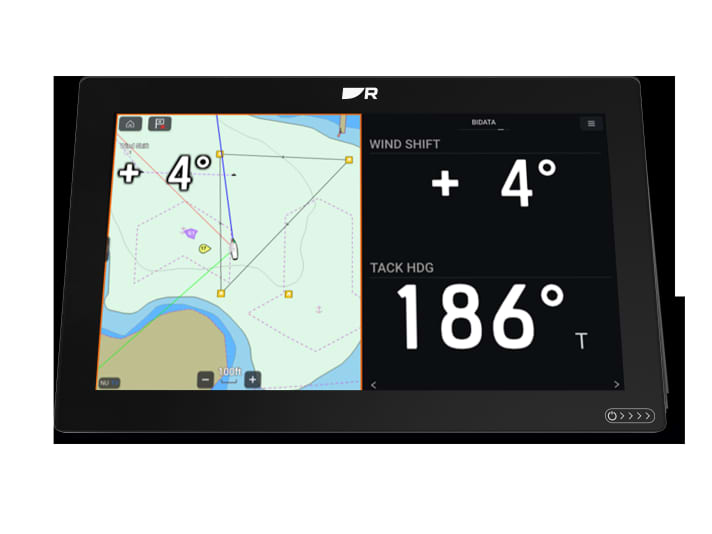Product offensive for sailors: Raymarine launches maxi displays, intelligent wind sensors and smart software






In this article:
For a long time, the British held back when it came to regatta functionality. Of course, Raymarine's instrument systems were able to display apparent and true wind, and the VMG, i.e. the speed made to windward, could also be called up. The multifunction displays in the Axiom series also allowed a starting line to be programmed, which latest variant was able to fade in approach courses and visualise wind shifts. However, if you were looking for a finely tunable regatta system, you were often better off with the competition. To change this, Raymarine is launching a whole range of new products on the market. The most obvious innovation is the Alpha Performance Displays. These are seven- and nine-inch maxi displays.
The devices are equipped with the extremely bright and matt touchscreen familiar from the Axiom 2 Pro series and are very slim. They can be operated in either portrait or landscape format and automatically adjust the brightness via an integrated light sensor. As they are not supplied with data via NMEA 2000, but via a Raynet connection, they can only be operated together with an Axiom plotter. However, one cable is sufficient for power and data, and up to four displays can be connected in series. A typical mast setup can therefore manage with a single connection.

Sailpoint: Polar data in a nutshell
The English have put a lot of brainpower into the software of the Alpha displays. The aim is to make the information as intuitive as possible. There are two patented functions for this purpose. The dynamic wind page display automatically zooms in on the relevant sector of the wind rose and displays it in a greatly enlarged format.
The second innovation is called sailpoint. This is a kind of artificial horizon to sail the boat to windward or leeward with maximum VMG. The display is as simple as it is ingenious. It consists of a crosshair and four coloured dots that are placed along a horizon line according to the boat's polar data. The helmsman's task is reduced to aligning the respective dot, the colour of the dot indicates whether you are sailing to port or starboard, and there is one dot for the optimum upwind course and one for a beam course. A horizontal line indicates whether the boat speed is correct. It moves from the lower edge to the horizon. Once it has arrived there, the yacht sails at the target speed stored in the polar data.
In addition to the patented special functions, the Alpha displays offer a wealth of displays, as the presentation of the data is fully customisable, i.e. all values can be displayed as a pointer instrument, digit, bar or graph. The size and position of the elements on the display can also be selected using drag and drop. Prices start at 1,423 euros for the seven-inch version, while the 9-inch model will cost 2,375 euros. Modular aluminium brackets are available to make mounting on the mast easier, and the Alpha displays can also be inserted flush into bulkheads or mounted on top like classic instruments.
RSW sensor: know which way the wind is blowing

The English call their new wind sensor RSW. The abbreviation stands for Raymarine Smart Wind. The blades and wind vane were developed in a wind tunnel and are designed to deliver precise measurements. However, the real highlight is the integrated acceleration and direction sensors. This means that the transducer recognises the mast movements and can calculate fluctuations in wind force and wind direction from the data. Measurement errors caused by mast twisting or a rotating mast are automatically recorded. The transducer even recognises and corrects measurement errors caused by upwash, i.e. the deflection of the wind flow by the sails. As the processing takes place in the encoder, no external black box or special software is required. The RSW supplies the corrected data directly to the NMEA 2000 network. The encoder will be available soon. The standard version with 30 metres of cable will cost 947 euros.

Lighthouse 4.5: know when to reef
Probably the most requested new feature in Lighthouse 4.5 is the polar manager. With this function, you can finally load your own polar data directly onto the plotter via a micro SD card as a CVS file. The tedious diversions via Raymarine is no longer necessary. In addition, the values can be subsequently changed on the device and, for example, different polar data can be stored for different scenarios, such as for regattas with and without a spinnaker or for different crew sizes.
In addition to the polar data, a reefing table can now also be stored. This is particularly interesting for sailors of cruising catamarans. If desired, the plotter will not only warn you if the reefing limit is exceeded, but will also recommend the best headsail and mainsail setup for the current wind conditions. A new calibration routine has also been added for systems with the current Airmar DST810 log encoder. Together with its integrated inclination sensors, a short cross is sufficient to calculate heeling errors from the boat speed. The display of wind shifts has been extended. They can be displayed both as a number and as a bar at the bottom of the chart. Lighthouse 4.5 is suitable for all plotters in the Axiom series and can be downloaded from the Raymarine support page.

